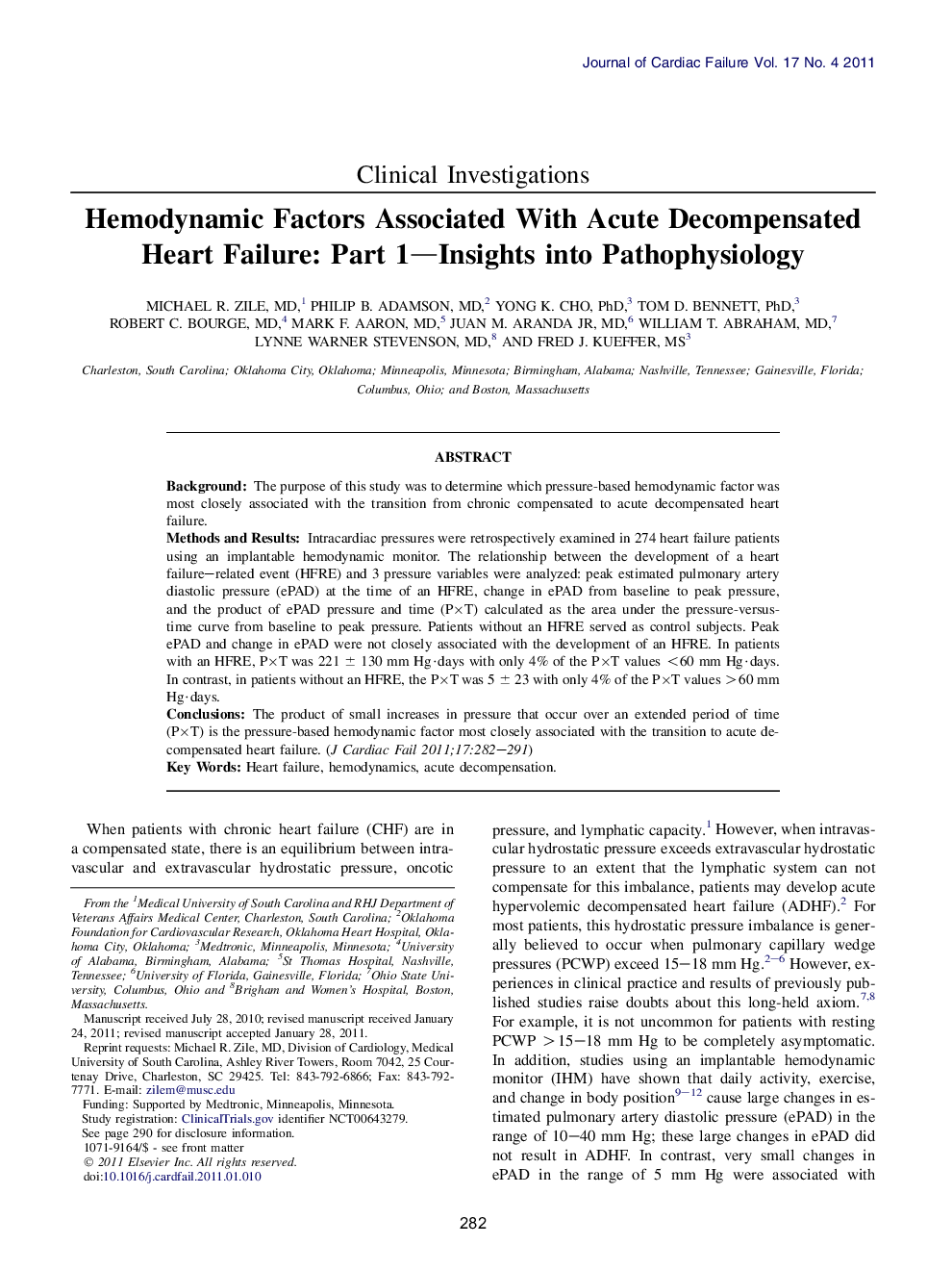| Article ID | Journal | Published Year | Pages | File Type |
|---|---|---|---|---|
| 2961098 | Journal of Cardiac Failure | 2011 | 10 Pages |
BackgroundThe purpose of this study was to determine which pressure-based hemodynamic factor was most closely associated with the transition from chronic compensated to acute decompensated heart failure.Methods and ResultsIntracardiac pressures were retrospectively examined in 274 heart failure patients using an implantable hemodynamic monitor. The relationship between the development of a heart failure–related event (HFRE) and 3 pressure variables were analyzed: peak estimated pulmonary artery diastolic pressure (ePAD) at the time of an HFRE, change in ePAD from baseline to peak pressure, and the product of ePAD pressure and time (P×T) calculated as the area under the pressure-versus-time curve from baseline to peak pressure. Patients without an HFRE served as control subjects. Peak ePAD and change in ePAD were not closely associated with the development of an HFRE. In patients with an HFRE, P×T was 221 ± 130 mm Hg·days with only 4% of the P×T values <60 mm Hg·days. In contrast, in patients without an HFRE, the P×T was 5 ± 23 with only 4% of the P×T values >60 mm Hg·days.ConclusionsThe product of small increases in pressure that occur over an extended period of time (P×T) is the pressure-based hemodynamic factor most closely associated with the transition to acute decompensated heart failure.
